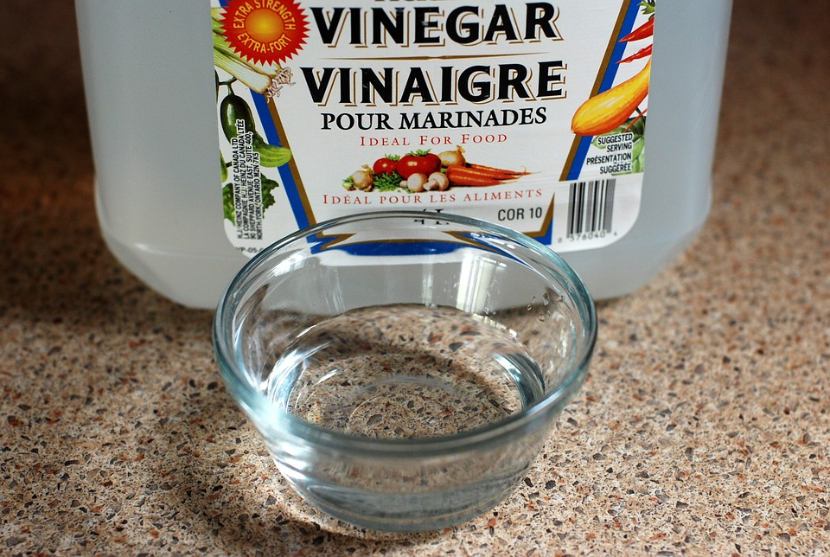“I attach a Material Safety Data Sheet for the safe handling of table salt as required by a governmental agency. One could wax sarcastically about this travesty suggesting that next we will be faced with recommendations for handling sugar or even water. Certainly, something is out of control!” — Harley W. Rhodehamel, in constituent letter to Senator Richard Lugar
“LyondellBasell in LaPorte, Texas had a leak.”
“Yeah? So?”
“It was acetic acid.”
“That’s just vinegar. So?”
“Glacial acetic acid.”
“Oh. That’s more than vinegar.”
“It was 100,000 pounds.”
“Oh my. That’s more than a leak. That’s over two tank truck loads.”
“Two people died and 30 were sent to the hospital.”
“Oh my God. What happened?
“We don’t know yet.”
Begin With the SDS
When the late Senator Lugar forwarded Mr. Rhodehamel’s letter to OSHA, I don’t know what he expected. Perhaps an apology for going overboard with their regulations? Instead, OSHA responded by pointing out three things:
“The responsibility for determining whether a product is hazardous belongs to the manufacturer or importer of the chemical – not OSHA.”
“When chemicals which are normally used by a consumer, such as sodium chloride, are used by employees in a manner not comparable to typical consumer use, the Hazard Communication Standard requires that a hazard determination be done.”
OSHA pointed out that by the way, in industrial quantities, table salt is hazardous. “Airborne sodium chloride…can cause respiratory irritation, and high enough levels employees are to wear a respirator. … Sodium chloride is incompatible with strong oxidizing agents and strong acids, and reacts violently with bromine trifluoride and lithium.”
Acetic acid, including glacial acetic acid, also has hazards. The manufacturers and importers of acetic acid are responsible for communicating those hazards in a Safety Data Sheet (SDS).
What’s the Difference between Vinegar and Glacial Acetic Acid?
That bottle of vinegar you buy at the grocery store contains 5% acetic acid in water. It is not flammable and has no acute toxicity. It causes mild skin irritation and if you’ve ever caught a strong whiff of vinegar, you know that it has a pungent odor. It has no lasting environmental effects. The presence of the acid lowers the freezing point to 26°F (-3 C) and increases the boiling point to 214°F (101 C). Naturalists are fond of promoting vinegar as a “non-chemical” substitute for all sorts of household chemicals, perhaps because we don’t call it an ethanoic acid solution.
Glacial acetic acid is 100% acetic acid. It is highly corrosive and causes severe skin burns and eye damage. Its flash point is 102°F (39 C) and its flammable limits are 4% to 19.9%. Its freezing point is 62°F (17 C), which is what earns the moniker “glacial”, and its boiling point is 244°F (118 C). OSHA’s permissible exposure limit is 10 ppm.
How Can Vinegar Be Fatal?
To begin with, it is a mistake to think of glacial acetic acid as vinegar.
An SDS for glacial acetic acid does not explicitly state that it can be fatal. The SDS does point to its flammability, which is significant even if the flash point is just high enough for the material to avoid being covered by OSHA’s process safety management standard. It must be diluted with a lot of water before eliminating its flammability hazard.
It is also corrosive. The SDS states that it will cause severe chemical burns to the skin, mouth, throat, and stomach. When inhaled, it causes severe damage to the respiratory system. Any of these effects, when extreme, can result in death.
What Can We Do?
We don’t know yet what happened in La Porte. We know that two workers died, though. We know that the federal agencies charged with investigating this sort of event – OSHA, EPA, and most importantly, the CSB – are taking it seriously. And we know that LyondellBasell Senior Vice President Michael VanDerSnick has committed that “We will find out what led to this release, and we’ll work to understand how it happened to prevent situations like this from ever happening again.”
When Mr. Rhodehamel wrote to his senator in 1992, he lamented “that next we will be faced with recommendations for handling sugar”. In 2008, an explosion of sugar at the Imperial plant in Port Wentworth, Georgia killed 14 and injured 38. We are far more aware now of the hazards of combustible dusts than we were before that explosion. Unfortunately, it often takes death to get our attention.
When we find out what happened in La Porte, there will be lessons learned and recommendations. We should take them to heart and apply them to our own facilities. It will be tempting to look at the reports that come out and say, “Well, that doesn’t apply to us, because …” Instead, we should look at those reports and ask, “How can we learn from this experience? What do we need to be doing differently? How do we avoid being a facility that first responders, the press, and various federal and state agencies descend upon? How do we keep our workers from dying here while doing their job?”
In the meantime, one place to start is with the SDSs of the chemicals on your site. Has familiarity bred contempt? Are there hazards described in those SDSs that, when taking the quantities and concentrations at your facility into account, indicate that greater care is warranted? Let’s use this tragedy at La Porte as a reason to check them one more time.
